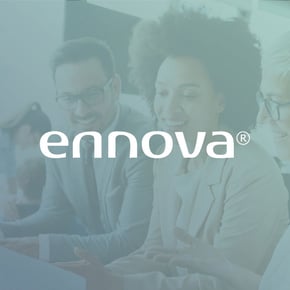Employee journey mapping is a critical tool for recognizing and understanding employees’ new preferences and needs. The changes in work methods and frameworks that have resulted from COVID-19 have reminded us all how extremely important a good employee experience is – and that it can be very different from one employee to the next.
|
Go to: |
Employee Journey Mapping: An overlooked, but valuable tool
The Employee Journey Mapping work has often taken a backseat to the company's many other business areas. Maybe because using Employee Journey Mapping has never made more sense than it does today.
Most experts would probably agree that employee journey mapping is an excellent way of providing insight that can form a strong basis for creating good employee experiences.
Yet Ennova’s international EX survey shows that just 10% of the 548 participating HR departments have charted the employee journey to a high degree and identified the most significant factors that drive the employee experience. 54% say they have only done this to a lesser degree.
There can be three primary barriers to employee journey mapping:
-
Management Prioritization:
In most companies, the CEO and Executive Management recognize the usefulness of working in a structured manner with employee journey mapping. But other – often financial – business areas get priority, and the management's attention rarely spans so far to seriously include employee journey mapping.
-
Lack of HR resources:
As mentioned in the book 'Mastering Employee Experience', HR should be taking the initiative and driving the work on employee journey mapping. But this will often be difficult – and meaningless – if the resources are earmarked for other work.
-
Lack of understanding among employees:
Employees may find it hard to see the value in contributing to employee journey mapping and understand why it should be a priority in their daily work. This will quickly change, however, if the executive and HR are focused on the implementation.
It takes considerable courage on the part of the company management and a belief that focus on the employee experience, with employee journey mapping as a guide, has a positive effect on the classic parameters in a business. With that said, we are now in a period where it has never been more relevant to begin working on employee journey mapping.
A new Approach to Employee Experience
Today, employees practically demand that a workplace take into account personal preferences and create tailored employee experiences.
Companies are constantly fighting for the best employees, and one of the things that can put the company ahead of the pack is the company taking into account and making room for personal preferences along the way in the work.
There is no mistaking any more just how much companies have to gain by taking into account employees’ differences and preferences.
In the search for the best future work methods among many different preferences, Employee Journey Mapping proves its worth by ensuring that differences are communicated and clear.
One result of Ennova’s survey shows that the wish/need to work from home is very different depending on the employee's age and their job. In other words, there is no such thing as a one-size-fits-all when it comes to a good employee experience.
How do you design and put in place an optimal work procedure for your many different employees if you do not know their preferences?
I am convinced that it would be practically impossible – and the result would not likely be optimal for either the employees or the company. That is why most companies need to take the first step toward implementing employee journey mapping as a way of working with employee experiences.
How to Get Started with Employee Journey Mapping
If you – and that primarily means your CEO – have also recognized that Employee Journey Mapping is the next step for you in terms of creating good experiences for your employees, from then on it is a matter of getting the ball rolling. Keep it simple, and start with small steps.
That means you should not launch a comprehensive transformation plan or involve all staff in the beginning.
In this book "Mastering Employee Experiences" you will find a detailed procedure.
But a simple startup plan might look something like this:
- Choose a person in charge:
Find an HR employee who is willing to be responsible for employee journey mapping. Upskill that person if necessary. For instance, through courses and the like.
- Choose a pilot project:
Choose a small department in the company to start implementing employee journey mapping.
- Focus on touchpoints:
Create an employee journey mapping pilot, where the focus is on the biggest touchpoints in the employee journey. For instance, onboarding, competency building, the first year, etc.
- Bring the insights to life:
You have now taken the first step towards a data-based foundation so you can design experiences that suit your various employees.
Map and Improve the Employee Journey
With 8 Steps to Successful EX, learn how to design impactful journeys that improve engagement at every stage.
Employee Journey Mapping is an Ongoing Process
Employee Journey Mapping is not a one-off affair, but rather an iterative process requiring that you revisit the work, as employees’ needs, demands, and contexts change regularly.
Only when you take the employees’ perspective and go through the employee journey in their shoes are you in a position to create the best employee experiences in your company.
Get in touch with usReady to Strengthen Your Employee Experience?
Our experts are ready to help you and your organization collect the right data and turn it into action. From survey setup to consulting, we're with you every step of the way.
|

